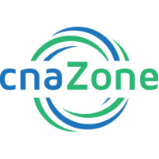Course Description
Coronary Artery Disease and Aging
Course Summary
Coronary artery disease and atherosclerosis involve a chronic disease state characterized by stiff and rigid coronary arteries and coronary plaques. Coronary artery disease is a chronic, progressive disease. As such, it is not surprising that older persons have higher rates of CAD. Unhealthy levels of blood cholesterol and fats, poor lifestyle factors, and certain modifiable and genetic risk factors cause atherosclerosis. Hypertension and cigarette smoking are the leading causes of atherosclerosis and coronary heart disease. Gender, genetics, and modifiable lifestyle choices can contribute to coronary artery disease, a progressive disease where the affected individual can suffer from angina and be at higher risk of a sudden coronary event, including cardiac death. Health care professionals can participate in the prevention and treatment of coronary artery disease by monitoring patient vital sign trends and any physical signs of distress, and by reporting serious concerns to an immediate supervisor when they are observed.
Course Objectives
- Identify and understand the causes and risk factors for coronary artery disease
- List the signs or symptoms of coronary artery disease that should be brought to a supervisor’s immediate attention
- Describe the major complications of coronary artery disease
Course Syllabus
- Introduction
- Causes Of Coronary Artery Disease
- Coronary Artery Disease Risk Factors
- Coronary Artery Disease Assessment Tools
- The Significance Of Atherosclerosis
- Complications Of Coronary Artery Disease
- Myocardial Infarction
- Treatment Of Coronary Artery Disease
- Caring For Patients With Coronary Artery Disease
Target Audience:
CNA
Credits:
1.0



